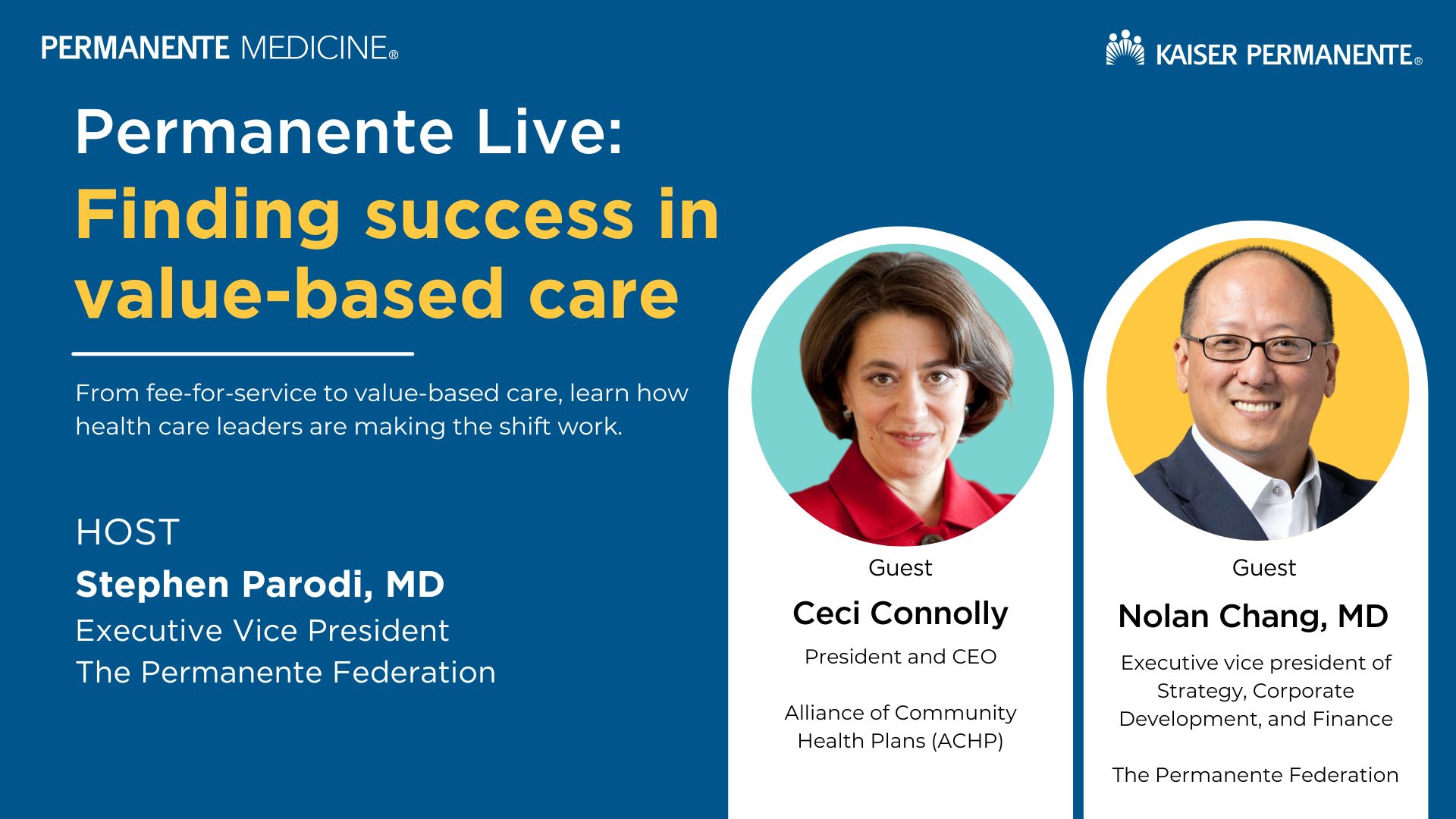Discover what truly adds value in digital health and AI. Experts discuss ambient AI, chronic disease tools, ROI, policy, and how leaders choose safe, effective innovations.
Replay: Permanente Live – The revolution and evolution of acute care at home
Physician leaders discuss the potential of hospital-at-home programs
Legislation passed early in the COVID-19 pandemic gave health systems the flexibilities to accelerate advanced-care-at-home programs. Additionally, it helped set the stage for the wider adoption of innovative home-care models that could bring the future of medicine forward, physician leaders said during a March 15 Permanente Live webinar.
“Over the last 2 years we learned that we could care for inpatient-level acuity patients and provide high-quality care that is person-centered,” said Mary Giswold, MD, chief operating officer for Northwest Permanente. She added that Northwest Permanente’s hospital-at-home program has grown to carry an average daily census of 15 patients, admitting about 3 patients per day who are provided everything from internet access to caregivers, therapies, and medically tailored meals.
Delivering hospital-level care at home also provides physicians with greater insights into social determinants of health, including what health systems can do to augment their patients’ support systems, physician leaders said during the hour-long webinar, which was moderated by Stephen Parodi, MD, executive vice president of External Affairs, Communications, and Brand at The Permanente Federation.
Sarita Mohanty, MD, president and chief executive officer of The SCAN Foundation, emphasized that health systems should be mindful not just of the clinical factors that influence health, but also of social and behavioral factors observed during visits to the patient’s home, which provide valuable insight to care teams. “We have an opportunity to really look at this more carefully to help vulnerable populations close health equity gaps,” she said, explaining how home-care visits enable care teams assess social factors such as food insecurity.
As health systems expand and scale advanced-care-at-home programs, the physician leaders emphasized the importance of having a consistent regulatory framework at the federal and state levels, to establish quality metrics that can be shared with the Centers for Medicare & Medicaid Services and commercial payers.
Over the last 2 years we learned that we could care for inpatient-level acuity patients and provide high-quality care that is person-centered.
— Mary Giswold, MD, chief operating officer, Northwest Permanente
Michael Maniaci, MD, medical director and enterprise physician lead for the Advanced Care at Home program at Mayo Clinic Hospital in Florida, explained how Mayo Clinic, in partnership with Kaiser Permanente and members of the Advanced Care at Home Coalition, is helping to inform national quality metrics designed to help keep patients safe as advanced-care-at-home programs become more widely adopted.
“How do we build this properly to look at the right metrics and feed that back to CMS and the commercial payers and everybody else?” he said. “That’s why we built this coalition together — to say, ‘How do we do this from a medical standpoint to keep our patients safe and happy?’ ”
Panelists noted that in any forthcoming regulatory framework, CMS will need to strike a balance to ensure that health systems are providing high-quality care while at the same time not overburdening them with excessive quality reporting.
David Levine, MD, general internist and clinician-investigator at Brigham Health and Harvard Medical School, said that as more health systems gain experience with advanced-care-at-home programs, they will have more data to see how these programs exist outside of pandemic-type situations that can help to inform quality metrics and reporting.
“I think we’ll see CMS start to write some additional rules, set some regulatory guidance around additional metrics that we want to start looking at,” Dr. Levine said. “But I don’t think we need hundreds and hundreds of quality measures to deliver good care. I think we need to measure the right things for our patients.”
Note: View the full replay of the webinar above.


